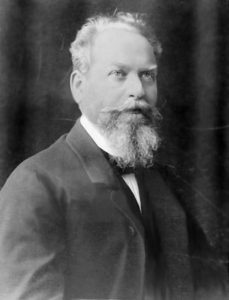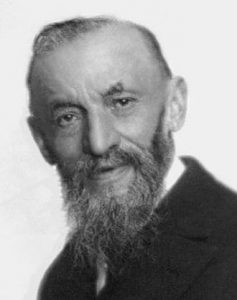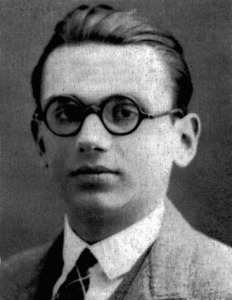Mathematical science does not seek to define the notion of a natural number, but to understand the set of natural numbers.
“Natural numbers have been made by God, everything else is the work of men”. Leopold Kronecker
1.We don’t define the natural numbers, but we can represent them
As with sets (see What is a set?), there is no (unanimous) mathematical definition of a natural number. Intuitively, natural numbers are concepts by which we count finite quantities: \(0,1,2,3,\ldots\). There are interesting philosophical definitions: for example, following and paraphrasing Edmund Husserl one can say that the natural number is the “pure form of finite multiplicity”. However, nothing can replace intuition: as with time or sets, it is not necessary to define a natural number to know what it is!It is a primitive concept in mathematics, and without it it is perhaps not possible to build even naive set theory (Ibid.)
However, unlike sets, natural numbers can be represented. Indeed, when counting a finite set of objects, the number of elements of this set can be considered either as an abstract quantity (this is called a cardinal number) or as the result of an enumeration (this is called an ordinal number). These two notions exist in general in set theory (naive or axiomatic), and one can then, by having the notion of finite set (which must also be rigorously defined! see Finiteness and Mathematical Infinity), represent the natural numbers as the finite ordinals (which are also the finite cardinals).
2.Mathematics seeks instead to understand the set of natural numbers, by means of a system of axioms
Rather than seeking to define the natural numbers, mathematical science is interested in understanding them as a set. The Greek philosopher Aristotle said: “there is no science except of the general”; in other words, the scientific approach seeks knowledge about classes of similar objects, not individual objects (unless one considers a class as an object!): there is a science of such a type of tree, but not of such a tree in particular. Thanks to set theory, we can study in a scientific way the set of natural numbers, which we note \(\mathbb N\).
By using axioms, i.e. statements admitted as true but unprovable from each other, known as Peano’s axioms (from the name of the Italian mathematician and linguist Giuseppe Peano), one gives a set of properties which determines the set \(\mathbb N\) in a unique way. In other words, two sets with these same properties, even if they are different, are mathematically indistinguishable: they are said to be isomorphic. These axioms are elementary properties of the operation of adding 1 to any natural number which is called the “successor application”. Peano’s axioms can be formulated as follows:
- The natural number \(0\) is not the successor of any number
- If two natural numbers \(m\) and \(n\) have the same successor, then \(m=n\)
- If \(S\) is a subset of \(\mathbb N\) such that \(0\in S\) and such that \(n+1\in S\) as soon as \(n\in S\), then \(S\) is the whole set \(\mathbb N\) (induction or recursion principle).
3.Reconstructing the “structure” of the natural numbers thanks to Peano’s axioms
This means that in order to study the natural numbers, it is not necessary to know what they are – or to define them formally, or even to know what the set \(\mathbb N\) is : the axioms are sufficient. The same will be true for real numbers (see What is a real number?). Of course, this does not exclude that having a representation is convenient; but it is only a representation… For example, if we consider that \(\mathbb N\) is (isomorphic to) the set of finite ordinals, we can represent \(0\) as \(\emptyset\), \(1\) as \(\{\emptyset\}\), \(2\) as \(\{\emptyset,\{\emptyset\}\}\), etc…
From Peano’s axioms, we can then define or reconstitute the whole “natural structure” of the set \(\mathbb N\), that is to say the addition (\(+\)) and multiplication (\(\times\)) operations of the natural numbers, and the order (\(\leq\) and \(<\)) and divisibility (\(|\)) relations, since we can add, multiply and compare finite quantities. In a specific sense that goes beyond the scope of this article, we can indeed define the operations \(+\) and \(\times\) through the induction principle, and the three relations from there.
4.The fertility of the axiomatic method: arithmetic, infinity, recursion
In particular, all natural arithmetic (divisibility, prime numbers, number bases…) as well as a lot of mathematics which exceed those of the set sole set \(\mathbb N\) can be deduced from these axioms alone.
The induction or recursion principle is associated to infinite sets, and allows them to be characterised (i.e. identified by properties) with respect to the set \(\mathbb N\). It also opens up recursion theory, a possible framework for Kurt Gödel’s famous incompleteness theorems, and the basis of theoretical computer science, particularly in connection with Turing machines, named after the mathematician Alan Turing. It is also and above all a fundamental principle of mathematical demonstration and construction, and it is generalised in set theory to what is called transfinite induction or recursion.
To sum up
We know intuitively what the natural numbers are, like time or sets. We can give a philosophical definition, and a mathematical representation. But to understand them as a generality, what we need is a univocal description in the mathematical sense, which is given to us by Peano’s axioms. Together with set theory, these axioms provide a foundation for many aspects of the description of the mathematical universe.
To go further
Peano’s axioms are those of the successor function, which allows to establish the infinity of the set (\mathbb N\). Discover the theory of finite and infinite sets in Course number 2 of Semester I of MATHESIS :
Mathesis I.2 : Sets, Applications and Numeration (From finite sets to mathematical infinity)




0 Comments